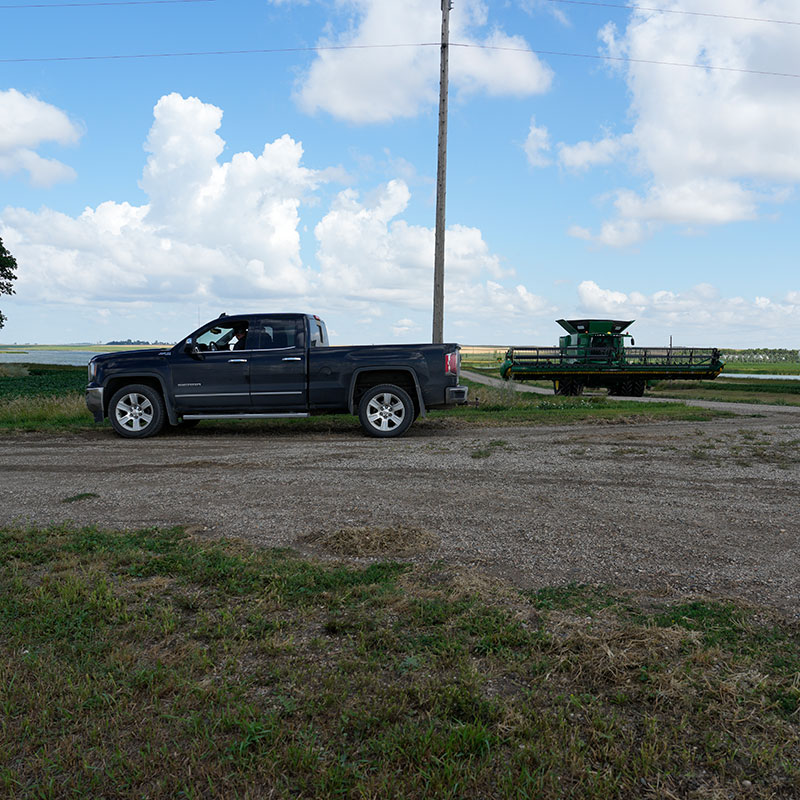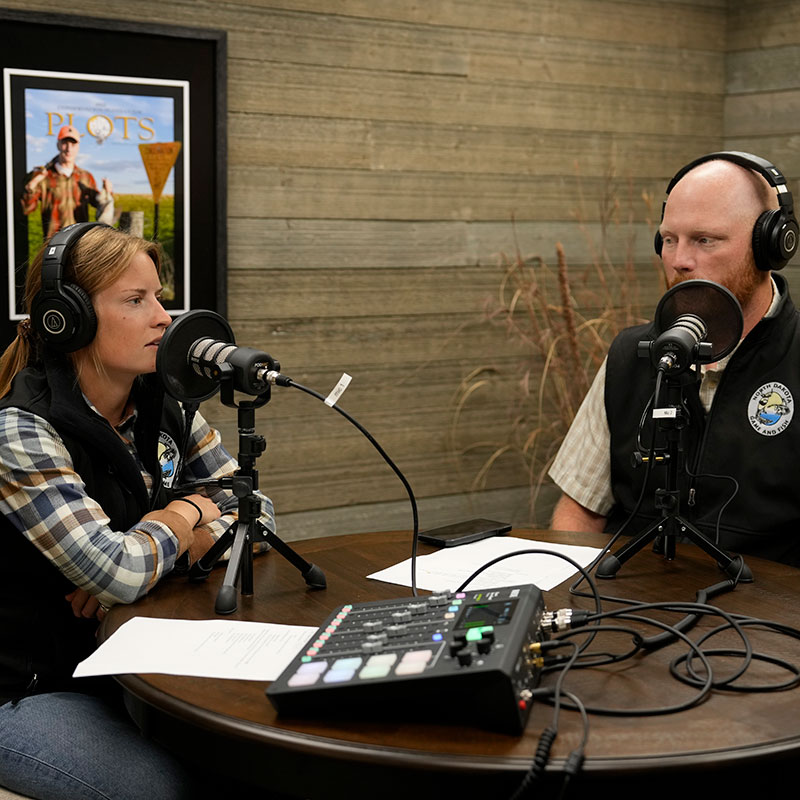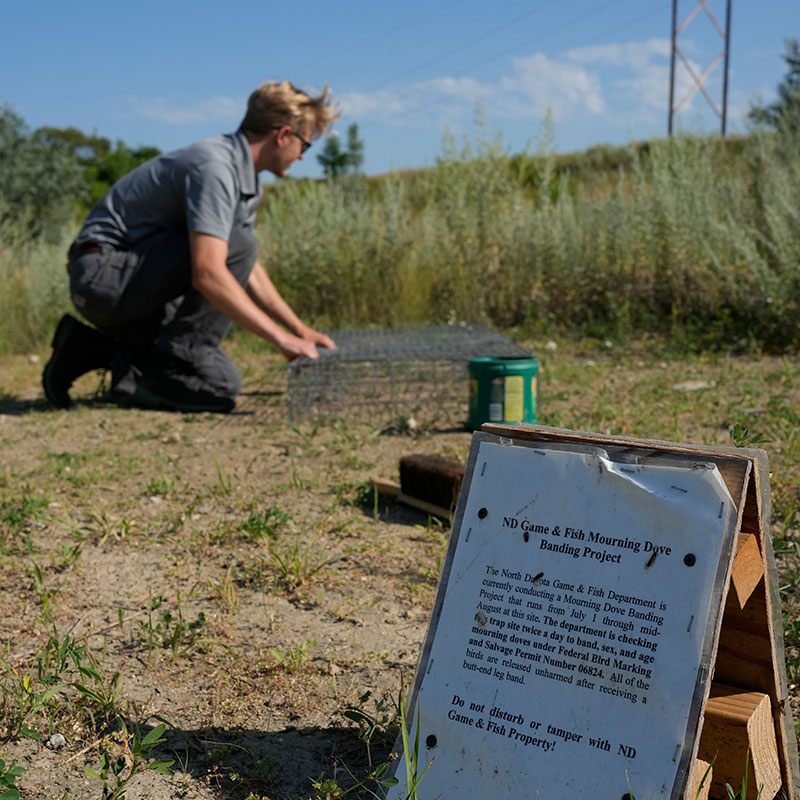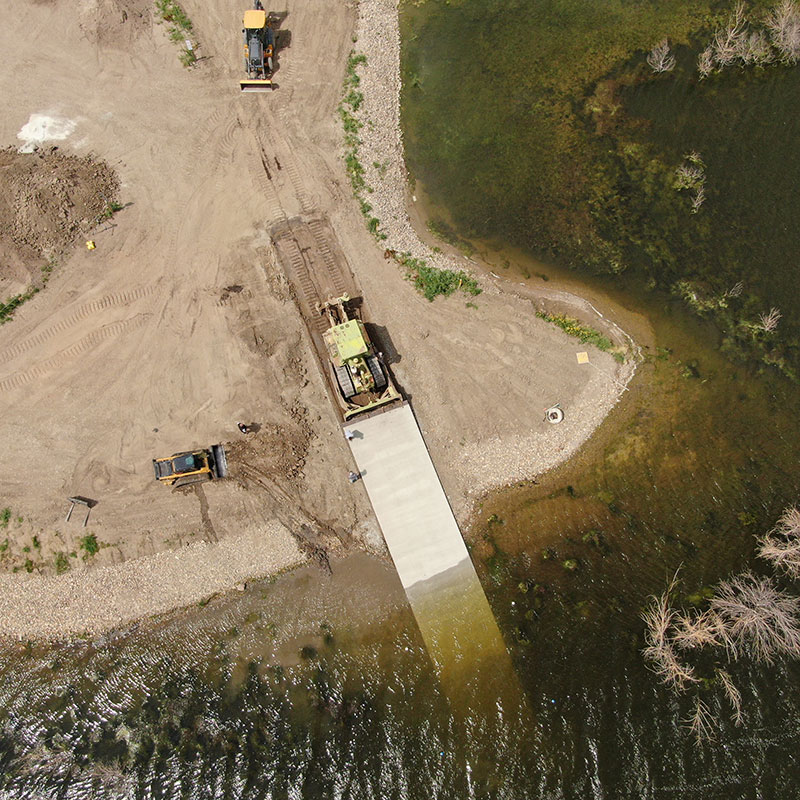
Buffaloberry Patch
2021 Upland Game Seasons Reviewed
North Dakota’s 2021 pheasant, sharp-tailed grouse and Hungarian partridge harvests were down from 2020, according to the state Game and Fish Department.
RJ Gross, Department upland game biologist, said the overall harvest was likely a result of fewer hunters and below average reproduction.
“We anticipated a slight decrease in upland game harvest for the fall in 2021 based on small brood sizes and a decline in observations per mile during our late summer roadside counts,” Gross said. “Although anecdotal reports from hunters indicated 2021 reproduction was better than we reported, the juvenile-to-adult ratio from our hunter-submitted wings confirmed that 2021 reproduction was below average for pheasants and sharptail.”
Last year, 47,020 pheasant hunters (down 18%) harvested 259,997 roosters (down 21%), compared to 57,141 hunters and 330,668 roosters in 2020.
Counties with the highest percentage of pheasants taken were Hettinger, Divide, Bowman, Williams and Stark.
A total of 15,762 grouse hunters (down 21%) harvested 45,732 sharp-tailed grouse (down 47%), compared to 19,971 hunters and 86,965 sharptails in 2020.
Counties with the highest percentage of sharptails taken were Mountrail, Burleigh, Ward, Divide and Kidder.
Last year, 14,013 hunters (down 17%) harvested 44,822 Hungarian partridge (down 14%). In 2020, 16,795 hunters harvested 52,251 Huns.
Counties with the highest percentage of Hungarian partridge taken were Mountrail, Ward, Stark, Williams and Divide.
HIP Registration Required
Cayla's Kitchen
Looking for a different way to enjoy your summer catch? Check out this south-of-the-border inspired grilled fish taco recipe complete with a pico de gallo and creamy lime sauce. And for more ideas to bring wild game to your table visit Cayla's Kitchen.
Baiting Restrictions
Hunters are reminded it is unlawful to hunt big game over bait, or place bait to attract big game for the purpose of hunting, in deer units 1, 2B, 3A1, 3A2, 3A3, 3A4, 3B1, 3C, 3D1, 3D2, 3E1, 3E2, 3F1, 3F2, 4A, 4B, 4C, 4D, 4E and 4F.
The restriction is in place to help slow the spread of chronic wasting disease, a fatal disease of deer, moose and elk that can cause long-term population declines if left unchecked.
In addition, baiting for any purpose is prohibited on all North Dakota Game and Fish Department wildlife management areas. Hunting big game over bait is also prohibited on all U.S. Fish and Wildlife Service national wildlife refuges and waterfowl production areas, U.S. Forest Service national grasslands, U.S. Army Corps of Engineers managed lands, and all North Dakota state trust, state park and state forest service lands.
Wing Survey Help
New Hunting, Trapping Guide
Hunters and trappers can find the North Dakota 2022-23 Hunting and Trapping Guide, which includes upland game, migratory game bird and furbearer hunting/trapping regulations and other information.
Printed guides are available at the usual license vendor locations. The 50-plus page guide also features a colored duck identification guide, aquatic nuisance species information, Tom Roster’s Nontoxic Shot Lethality Table and more.
WMA Equipment Requirement
The North Dakota Game and Fish Department reminds hunters that tree stands, ground blinds and game cameras cannot be placed on state wildlife management areas prior to August 20.
Equipment set out prior to that date, or left on a WMA after January 31, is considered abandoned property and is subject to removal.
In addition, an equipment registration number, or the owner’s name, address and telephone number, must be displayed on all equipment requiring identification.
Owners can generate an equipment registration number by visiting My Account. One registration number will be issued that can be used on all equipment that requires identification.
Federal Duck Stamp Required
A federal duck stamp is required for waterfowl hunters 16 and older beginning September 1. Waterfowl includes ducks, geese, swans, mergansers and coots.
This year’s 2022-23 federal duck stamp is available for electronic purchase online, or at license vendors registered with the Department’s licensing system.
Physical stamps are not available at North Dakota license vendors, but can still be purchased at many U.S. Postal Service offices.
The electronic stamp is a purchase item like any other hunting or fishing license. When the purchase is completed the electronic stamp is valid immediately. Federal duck stamp will be printed on the license certificate, along with an expiration date 45 days from the date of purchase. The physical stamp will be sent by postal mail.
The physical stamp is processed and sent by the official duck stamp vendor and should arrive to the individual buyer well before the expiration date printed on the electronic license. The physical stamp must remain in possession of the hunter after the 45-day electronic stamp has expired. Individuals who have questions regarding the status of their physical stamp can contact the federal duck stamp vendor customer service at 800-852-4897.
The federal duck stamp has a fee of $25. An additional $1.50 fee is added to cover shipping and handling costs of the physical stamp.
Report Banded Birds
Hunters should check harvested migratory birds for bands this fall and report federal bands at reportband.gov.
In addition, the bird banding lab has a mobile-friendly reporting site that will aid hunters to report bands via mobile devices.
The band number, date and location of each recovery are needed. After the band information is processed, hunters can request a certificate of appreciation, and information about the bird will be returned in an email. Hunters can keep all bands they recover. Information received from hunters is critical for management of migratory game birds.
Sandhill Crane Permits Required
North Dakota’s sandhill crane season opens September 17 and continues through November 13.
In addition to other licenses required, resident hunters need a $10 crane permit, while nonresidents need a $30 permit. Hunters can apply online. Harvest Information Program certification is required.
State Fair
PLOTS Online
The North Dakota Game and Fish Department’s Private Land Open To Sportsmen Guide for 2022 is available online. In addition, the free printed PLOTS guides are available at most license vendors and other locations throughout the state.
The guide will feature about 800,000 PLOTS acres. Because the guide is printed in mid-August, some PLOTS tracts may have been removed from the program since the time of printing. There will also be some PLOTS tracts where the habitat and condition of the tract will have changed significantly. Conversely, Game and Fish might have added new tracts to the program after the guide went to press.
To minimize possible confusion, Game and Fish will update PLOTS map sheets weekly on its website.
The PLOTS Guide features maps highlighting these walk-in areas, identified in the field by inverted triangular yellow signs, as well as other public lands.
The guides are not available to mail, so hunters will have to pick one up at a local vendor or Game and Fish offices, or print individual maps from the website.
Caution on Rural Roads
Watchable Wildlife Photo Contest
Photographers who are interested in sending photos for the North Dakota Game and Fish Department’s Watchable Wildlife Photo Contest must follow guidelines for submitting their work.
Photographers should go to the Game and Fish Department’s website at gf.nd.gov/photo-contest. Then it is a matter of providing some pertinent information about the photo and uploading it. Doing so helps both with ease of submitting photos for the photographer and managing those images for Department staff.
The contest is now open and the deadline for submitting photos is Oct. 3. For more information or questions, contact Patrick Isakson, Department conservation biologist, at pisakson@nd.gov.
The contest has categories for nongame and game species, as well as plants/insects. An overall winning photograph will be chosen, with the number of place winners in each category determined by the number of qualified entries.
Contestants are limited to no more than five entries. Photos must have been taken in North Dakota.
By submitting an entry, photographers grant permission to Game and Fish to publish winning photographs in North Dakota OUTDOORS, and on the Department’s website.
Podcast
Dove Banding
Fire Danger Index
As hunting seasons and other fall activities get underway, hunters and other outdoor enthusiasts need to be aware of the daily fire danger index.
Considering the wet spring and summer, especially compared to the drought of 2021, there is a lot of fuel on the landscape, and hunters are urged to keep up with the daily rural fire danger index, which is issued by the National Weather Service, to alert the public to conditions that may be conducive to the accidental starting or spread of fires.
In addition, county governments have the authority to adopt penalties for violations of county restrictions related to burning bans.
These restrictions apply regardless of the daily fire danger index and remain in place until each county’s commission rescinds the ban.
Hunters should consider bringing along a shovel, fire extinguisher, extra water and heavy fabric for putting out accidental fires. However, individuals who are not trained firefighters should not attempt to fight a fire that is out of control. Instead, contact the nearest rural fire department immediately. Also, hunters should stay clear of tall vegetation when parking a vehicle. The fire danger index can change daily depending on temperature, wind and precipitation forecasts. If the index reaches the high, very high or extreme category, open burning is prohibited; off-road travel with a motorized vehicle is prohibited, except for people engaged in a trade, business or occupation where it is required; and smoking is restricted to inside of vehicles, hard surface areas, homes or in approved buildings.
Information on current fire danger indexes is available at ndresponse.gov.








